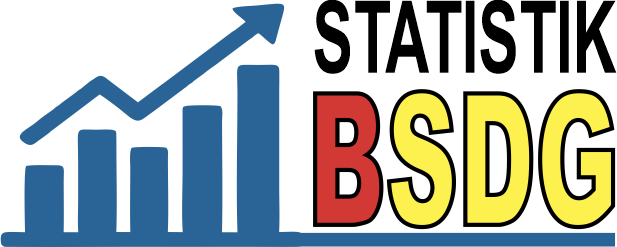THE INDONESIAN TITANIUM DEPOSIT TYPES AND THEIR RESOURCES: THE ASPCETS FOR TITANIUM COMMODITY DEVELOPMENT
Abstrak
Indonesia has several Titanium deposit types: beach placer, alluvial and lateritic types. The source of Titanium minerals in beach placer is derived from Tertiary Volcanic Rocks.The occurence of alluvial Titanium deposit is closely associated with cassiterite (tin minerals) alluvial in Bangka-Belitung Islands. The source of Titanium minerals (ilmenite) are derived from
weathering on tin mineralization hosted in metamorphic and granitic rocks within uplifted morphology areas.
Lateritic Titanium deposits are formed by lateritization process in association with bauxite and nickel in Riau, Kalimantan and Sulawesi Islands. The sources of Titanium are in granitic and metamorphic basement rocks.
Java beach placer resources are quite big in tonnage, nearly 50 million tons in total, with significant TiO contents ranging from 8.91 % to 3.17 %. Beach placer along the south shoreline of Java seems to indicate consistency in their mineralogical and genetic types with relatively
homogenous in TiO contents.
Sumatra shows significant resources for lateritic Titanium deposit that is up to 107,800,859 tons with 0.5% to 15 % TiO . The quite interesting resources are indicated by very significant TiO average (15%) with the total of 19,243,757 tons of lateritic deposit type in Bintan Island, Riau,
Sumatra. The total resources of beach placer type deposits in Sumatra are much lower than lateritic ones.
Sulawesi has both beach placer and lateritic types where the interesting resources of this island are indicated by quite big resources and significant values in TiO grades in North Sulawesi; the tonnage is up to 31,400,000 tons with TiO content average is 9.85 %. On the basis of resources and processing technologies, beach placer deposits in Sumatera,Java and Sulawesi are thought to have potentially economic significance. However, such available resources are needed to upgrade by performing detailed and systematic exploration.
Government policies and environment concerns are important aspects for consideration in Titanium commodity development of this country
##plugins.generic.usageStats.downloads##
Referensi
Anonim. 2005: Iron Sand Exploration Technical Guidelines, Directorate of Mineral Resources Inventory.Unpublished.
Anomim. 2013. Ilmenite data Bangka Belitung and Riau Islands, PT. Timah Tbk. Unpublished.
Anonim., 2011, Iron Sand prospecting in West Lampung, Lampung Province. Centre for Geological Resources. Unpublished.
Anonim, 2012: Database Mineral Logam, Centre for Geological Resources. Unpublished.
Ansori, Chusni. 2011 : Iron Sand Mineralogy distribution on the South Coast track Kebumen-Kutoarjo, Geological Resources newsletter. Vol.6 No.2 August 2011.
Aliamin Husin, 1971. Titano Iron Deposit at The Southern Coast of Kulon Progo, Yogyakarta, Directorate of Geology.
A. Fuad, A. Tanjung, 1996 : Titan Dioxide Extraction of Iron Sand D.I Yogyakarta.
A. Yaghubpur, Y. Rahimanuri and S. Alipaur, 2007 : Mineralogy, Geochemistry, of Titanium Rick Rocks of Yara Agaj, Urmia, North west Iran, University of Teheran.
Force, E R, 1991: Geology of Titanium- Mineral Deposit. U.S. Geological Survey Special Paper, 259pp.
Gambagi, J, 2000: Titanium, US Geological Survey Minerals Yearbook 2000
Mutalim, Tri Murti dan Toni Suryadi, 1992 : Assessment Preparation of TiO Pigment Iron Sand 109 Ilmenite Jampang Kulon area Sukabumi West Java.
Van Bemmelen, R.W.,1949: The Geology of Indonesia Vol II Economic Geology.
Subandoro, 1972. Official Travel Report of Iron Sand Central Java. Directorate of Geology .
Sutedjo, Sujitno, 1997: Primary Tin in Indonesia (Geology and the Explration). PT. Tambang Timah (Persero).
Walmen Simanjuntak, 1996: Trial Titan Dioxide Extraction of Iron Sand D.I Yogyakarta. PPTM.
http://www.asianmetal.com/news/getProducsNewsEn.am?productThreeID=51
##submission.copyrightStatement##
##submission.license.cc.by-nc-sa4.footer##Penulis yang naskahnya diterbitkan menyetujui ketentuan sebagai berikut:
Hak publikasi atas semua materi naskah jurnal yang diterbitkan/dipublikasikan dalam situs Buletin Sumber Daya Geologi ini dipegang oleh dewan redaksi dengan sepengetahuan penulis (hak moral tetap milik penulis naskah).
Ketentuan legal formal untuk akses artikel digital jurnal elektronik ini tunduk pada ketentuan lisensi Creative Commons Attribution-ShareAlike (CC BY-SA), yang berarti Buletin Sumber Daya Geologi berhak menyimpan, mengalih media/format-kan, mengelola dalam bentuk pangkalan data (database), merawat, dan mempublikasikan artikel tanpa meminta izin dari Penulis selama tetap mencantumkan nama Penulis sebagai pemilik hak cipta.
Naskah yang diterbitkan/dipublikasikan secara cetak dan elektronik bersifat open access untuk tujuan pendidikan, penelitian, penyelidikan, dan perpustakaan. Selain tujuan tersebut, dewan redaksi tidak bertanggung jawab atas pelanggaran terhadap hukum hak cipta.















